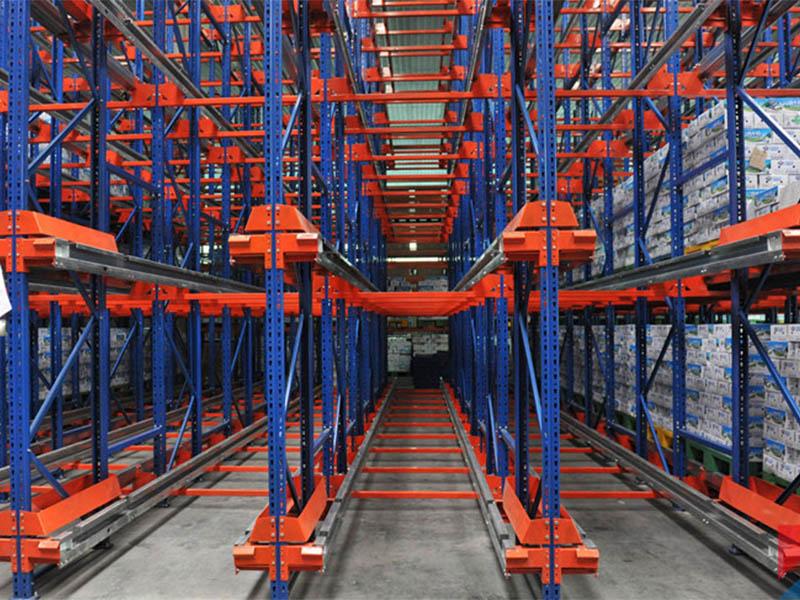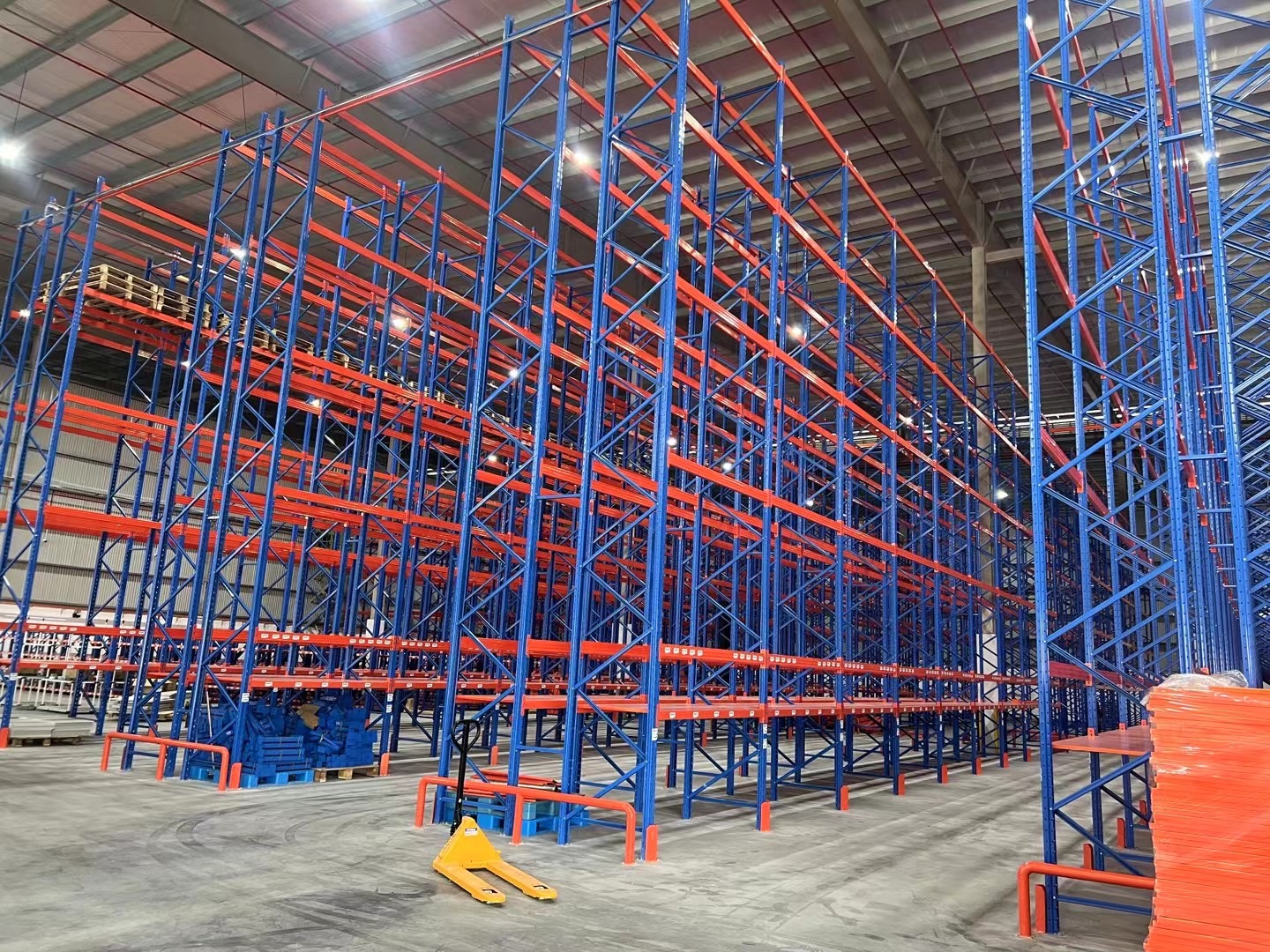In the relentless pursuit of warehouse optimization, where every square foot translates to operational cost and efficiency, the mobile pallet racking system emerges as a transformative solution. Unlike traditional static racking, this innovative approach fundamentally rethinks storage density and accessibility. If you're grappling with space constraints, high real estate costs, or inefficient storage layouts, understanding the power of a mobile pallet racking system is crucial. This comprehensive guide delves deep into five key aspects, explaining how this dynamic storage solution can revolutionize your warehouse operations.

What is a Mobile Pallet Racking System?
At its core, a mobile pallet racking system consists of rows of pallet racking mounted onto wheeled carriages that move laterally along embedded floor rails. Instead of fixed aisles between every rack row, aisles are created only where and when needed. When an operator requires access to a specific pallet location, the relevant rack rows move apart electronically (or manually in smaller systems), creating a temporary access aisle. Once the forklift completes its task and exits, the rows close back together, eliminating the wasted aisle space. This ingenious mechanism allows warehouses to store significantly more pallets within the same footprint compared to conventional static racking.
1. Unparalleled Space Savings and Storage Density
The primary and most compelling advantage of a mobile pallet racking system is its dramatic increase in storage density. Traditional warehouses dedicate up to 50% or more of their floor space to aisles necessary for forklift access. Mobile racking slashes this requirement.
The Compression Principle: By eliminating most permanent aisles, a mobile pallet racking system effectively "compresses" the storage footprint. Typically, only one working aisle is needed at a time, regardless of how many rack rows are in the system.
Density Gains: Storage density increases can range from 60% to over 100% compared to selective pallet racking. This means potentially doubling your storage capacity within the same existing building envelope. For example, a warehouse storing 5,000 pallets with static racking might store 8,000 to 10,000+ pallets using a well-designed mobile pallet racking system.
Optimizing High-Cost Space: This is particularly valuable in urban areas or regions where land and construction costs are prohibitively high. Maximizing existing space defers or eliminates the need for costly expansions or relocations.
Ideal for Slow-Moving Stock: While accessible, mobile racking is exceptionally efficient for storing medium to slow-moving inventory where constant access isn't required for every pallet every day.
2. Operational Workflow and Accessibility
While density is king, accessibility remains paramount. A well-implemented mobile pallet racking system seamlessly integrates into warehouse workflows.
On-Demand Aisles: Access is precisely where and when it's needed. Operators request an aisle via a control panel (often integrated with Warehouse Management Systems - WMS) or push-button station. The relevant racks move smoothly apart to create the access path.
Sequential Access: Modern systems feature sophisticated control systems that manage the movement of multiple rows. Safety interlocks prevent adjacent rows from moving simultaneously unless creating a wider aisle. Systems can handle sequential access requests efficiently.
FIFO and LIFO Compatibility: Mobile racking can be configured for both First-In-First-Out (FIFO) and Last-In-First-Out (LIFO) inventory management strategies, depending on the aisle configuration and movement logic.
Integration with WMS: Advanced mobile pallet racking systems integrate directly with WMS software. The WMS can direct the system to open the precise aisle needed for the next pick or put-away task, optimizing travel paths for operators.
Reduced Travel Time: By concentrating storage, operators spend less time traveling long distances down aisles and more time on productive picking or storing tasks. The working aisle is always close to the target location once opened.
3. Cost Analysis: Investment vs. Long-Term ROI
Implementing a mobile pallet racking system represents a significant capital investment compared to basic static racking. However, the long-term financial benefits often paint a compelling picture.
Higher Initial Cost: The inclusion of the carriage movement mechanism (motors, gearboxes, controls), rails embedded into the floor, and the sophisticated control system means the upfront cost per pallet position is higher than selective racking. Installation is also more complex.
Dramatically Lower Cost per Pallet Position: This is where the mobile pallet racking system shines. When calculated per square foot of building space, mobile racking almost always offers a significantly lower cost per stored pallet. The massive increase in density leverages the building's value far more effectively.
Avoided Expansion Costs: The most substantial ROI often comes from avoiding the massive costs associated with building a new warehouse, expanding an existing one, or leasing additional space. The savings on real estate, construction, property taxes, heating, cooling, and lighting for a larger building can be enormous.
Operational Savings: Reduced travel time for forklifts translates into lower labor costs, less fuel or electricity consumption, and reduced maintenance costs for material handling equipment.
Long Asset Life: High-quality mobile pallet racking systems are built to last decades with proper maintenance, providing a long-term return on the initial investment. The durability of the system is a key factor in the ROI calculation.

4. Suitability and Applications: Is Mobile Racking Right For You?
While powerful, a mobile pallet racking system isn't a universal solution. Understanding its ideal applications is key.
High-Density Needs: The primary driver is the requirement for maximum storage density within a constrained space.
Medium/Slow-Moving Inventory: Best suited for stock that doesn't require constant, instantaneous access to every single pallet throughout the day. While access is reliable, moving racks takes time (seconds to minutes depending on distance). Very high-velocity picking environments might benefit more from other solutions like carton flow or specific static configurations combined with mobile racking for reserve storage.
Controlled Environments: Works best in warehouses with organized operations and trained personnel. Strict adherence to safety protocols is non-negotiable.
Floor Load Capacity: The concentrated load of multiple rack rows moving requires a strong, level concrete floor. A thorough floor slab analysis is mandatory before installation.
Building Height: Mobile racking works exceptionally well in buildings with high clear ceilings, allowing for multiple tiers of pallet storage within the dense configuration. Vertical space utilization complements the horizontal density gains.
Common Applications: Archives, cold storage (where space is extremely expensive), libraries, manufacturing parts storage, document storage, spare parts warehouses, import/export logistics centers, and any facility where space is at a premium.
5. Safety, Installation, and Maintenance Considerations
The dynamic nature of a mobile pallet racking system introduces unique safety and operational requirements.
Robust Safety Systems: Safety is paramount. Key features include:
Aisle Presence Sensors: Infrared or pressure sensors detect personnel or obstructions within an aisle, preventing rack movement.
Safety Edges: Sensors along the rack base that stop movement upon contact.
Warning Lights and Alarms: Audible and visual signals activate before and during movement.
Emergency Stop Buttons: Strategically located for immediate halting of all movement.
Safety Barriers: Physical barriers preventing entry into areas while racks are moving.
Lockout/Tagout (LOTO): Procedures for maintenance work.
Critical Training: Comprehensive, ongoing training for all personnel (operators, maintenance staff, cleaners) is essential. Training must cover safe operation procedures, emergency protocols, hazard recognition, and the importance of not entering aisles unless actively working and the system is secured.
Professional Installation: Installation is complex and requires specialized expertise. Precise leveling of the floor rails is critical for smooth operation and preventing undue stress on the system. Structural engineering oversight is vital.
Embedded Rails: Rails are grouted into the floor, creating a flush surface. Proper floor preparation and rail installation are fundamental to system longevity and performance.
Ongoing Maintenance: Regular preventative maintenance is crucial. This includes:
Inspecting and lubricating moving parts (gearboxes, bearings, wheels).
Checking safety sensor functionality.
Verifying structural integrity of racks (uprights, beams).
Ensuring floor rails are clean and unobstructed.
Testing control systems and emergency stops.
Structural Load Management: The system must be designed and installed to handle the specified unit loads and seismic requirements (if applicable). Regular inspections for damage or overload are vital.
The mobile pallet racking system stands as a testament to innovative warehouse engineering, offering a powerful solution to the perennial challenge of space optimization. By dramatically increasing storage density, potentially doubling capacity within the same footprint, it delivers significant long-term cost savings by leveraging existing real estate and avoiding expansion. While requiring a higher initial investment and a strong commitment to safety protocols and training, the return on investment through maximized space utilization and operational efficiencies is undeniable.
If your warehouse is constrained by space, burdened by high real estate costs, or storing significant volumes of medium to slow-moving inventory, implementing a mobile pallet racking system warrants serious consideration. It transforms static storage into a dynamic asset, unlocking hidden capacity and driving tangible operational and financial benefits. Consult with experienced warehouse design and racking specialists to conduct a detailed feasibility study and determine if this powerful high-density storage solution is the key to unlocking your warehouse's full potential. The journey towards maximizing your space starts with understanding the power of mobility.







